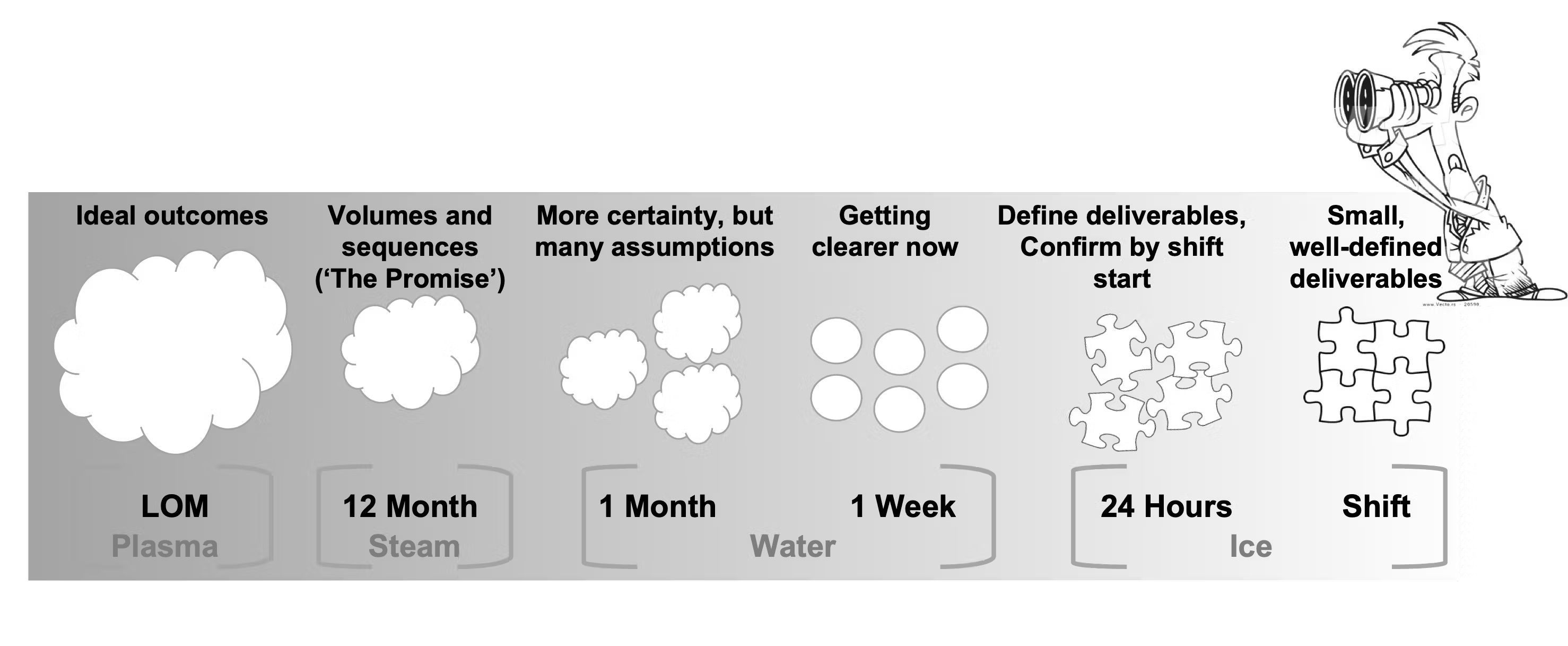The Flawed Approach: Monthly Targets Divided by Days
Many mining operations fall into the trap of taking their monthly production target and simply dividing it by the number of days in the month to set daily goals. This oversimplified approach is a recipe for lost productivity, costing mines at least 10% in forgone output.
How do we know?
We have worked with many operations and helped them address this old chestnut, swopping it for far better, first principles-based practices. This has consistently resulted in a increased daily production output.
Anecdotally we have been told that this knowledge used to be more common but it has left many operations and they are reinventing the wheel (and many other things along with it).
Anecdotally we have been told that this knowledge used to be more common but it has left many operations and they are reinventing the wheel (and many other things along with it).
Why this Approach is Misguided
- Monthly plans are outdated by the time they’re executed, failing to account for evolving conditions.
- They’re based on assumptions about resources, equipment, weather, etc., which at this point in time will be pure fiction.
- Comparing daily actuals to an arbitrary slice of the monthly plan is meaningless.
The Smarter Solution: Time-Aligned Planning
The Fundamental Principle
When evaluating performance, plans and actuals must align over the same time horizon:
- Monthly plans against monthly actuals
- Weekly plans against weekly actuals
- Daily plans against daily actuals
Best Practice Steps
- Develop a “ready-reckoner” tool with near-instantaneous rates, best-demonstrated utilisation hours, and other variables to input estimated losses.
- Use this tool to confirm realistic 24-hour targets close to execution.
- Post-execution, compare estimates to actual results.
This structured approach enables meaningful variance analysis and opportunity identification. For example, if targets were missed due to low utilisation, you can pinpoint the root causes (e.g., lengthy meetings, missing equipment) and address them.
The Danger of Unambitious Targets
“The greater danger…lies not in setting our aim too high and falling short; but in setting our aim too low, and achieving our mark.” – Michelangelo
By building in excessive buffers, we not only undermine our potential but also fail to generate insightful variances through the Plan-Do-Check-Act cycle. Aiming low leads to low output and ignorance of lost opportunities.
Tracking Monthly Progress
While monthly cumulative charts are useful for high-level progress tracking, they become more meaningful towards month-end. A better approach is week-by-week tracking, with plans developed from first principles, not averages.
Generally, planning and scheduling rates should be more ambitious over shorter horizons.
Key Takeaways
- Dividing monthly targets by days is an oversimplification that compromises productivity,
- Align plans and actuals over consistent time frames,
- Use data-driven tools for realistic targets, and
- Maintain an ambitious yet achievable outlook.
This rigorous approach unlocks opportunities for continuous improvement and optimised performance.


